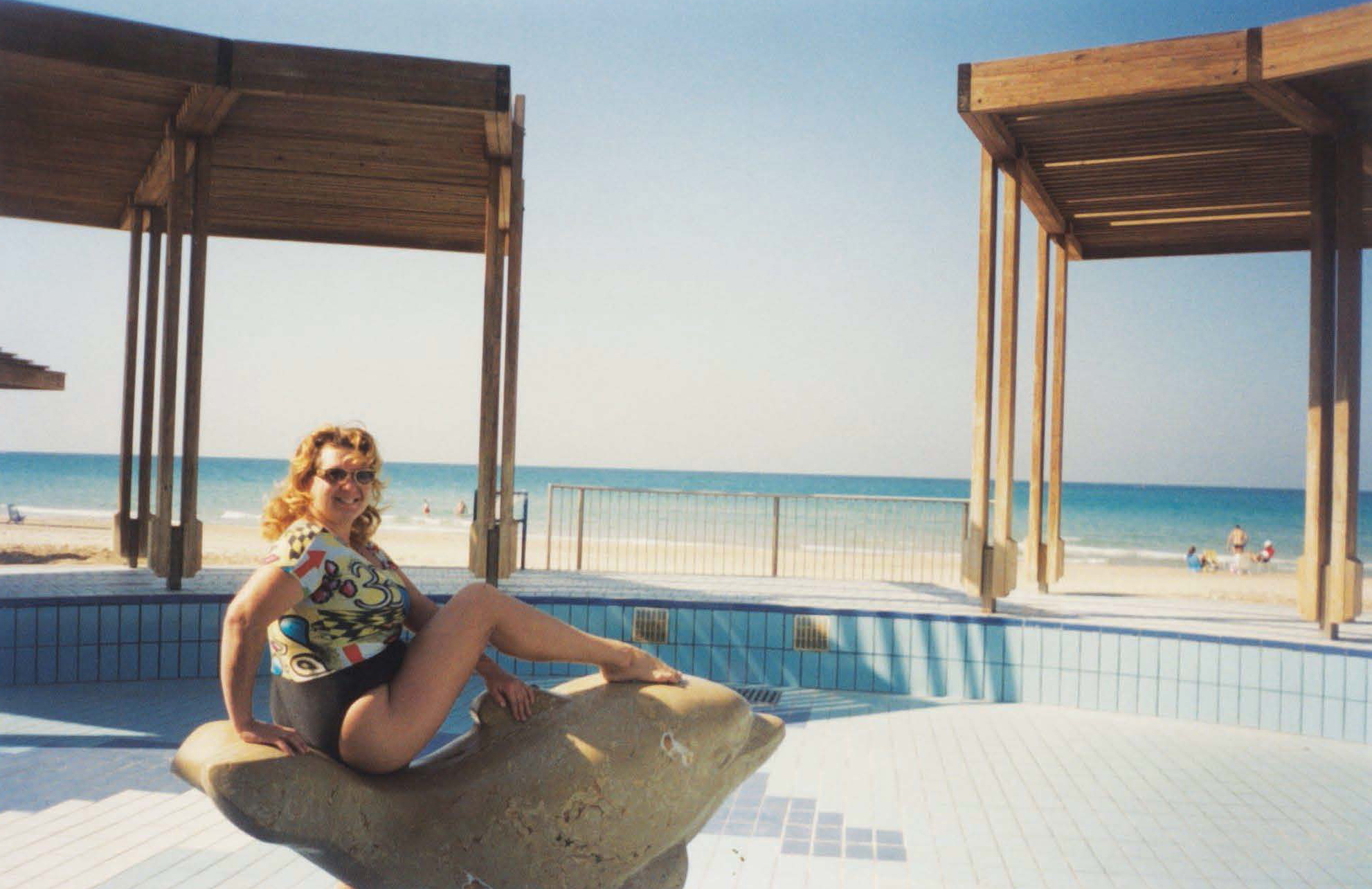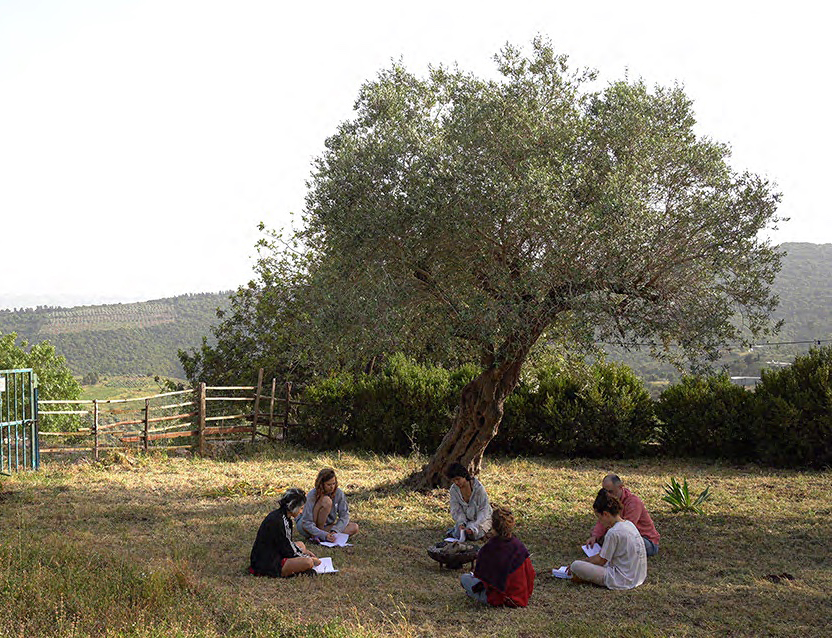How did the book come to be?
“Salt Years” is a project that grew the same way a huge crystal can grow from a single grain of salt. The book sprang from a need to tell the story of the Dead Sea, its wonders, and the mythologies that came about by its banks, alongside my story, with photographs of the works I had created in it from 2003 to 2018.
In 2003, I self-published my first book, The Country. This was after my exhibit, of the same name, closed. My friends and I had coincidentally documented the installation. In the book, I tried and maybe even succeeded with the help of eminent designer Michal Saar, to capture the experience of a singular project. A few more books have come out since then. In 2011, I exhibited in the Israeli pavilion in the Venice Biennale. It was kind of a voyage of the studio and my team and, for us it marked also the cold peace between Israel and Jordan. Our appetite for making a book grew out of this trip. It took a few years for the idea to come together.
What makes Salt Years special?
In Salt Years, we wanted a high and uniform level of structure and documentation that will include the projects’ “before” and “after” while suggesting several interpretations for each. This book is a lamentation over a personal loss and the gradual loss of the the Dead Sea basin. My partner Yotam and I wanted to share the studio’s work processes at the most magical place in the world, and show what was impossible to depict as part of the installations we’d built. We embarked, unwittingly, on an adventure that only looked defined and reasonable back then, but in hindsight, was more like preparations for ten or more installations. It took a tremendous amount of energy, reconstructions, filling in the gaps, and archival research and writing so that we could begin the pleasurable and challenging work of designing the book.
How did you work with your archive?
I thought that the only way to work with my archive would be chronological. When we came to the designer, Michael Gordon, he looked at the materials and said that they weren’t of a high enough quality. He sent us back to the sea to photograph materials that we didn’t have, and also things that we didn’t have access to before. We turned a big warehouse into a studio and every few weeks we erected a new installation inside it just so we could document it. We tried to photograph in a way where it wouldn’t be clear if it was a studio, a gallery, or a museum. The spaces are intentionally austere to give space to the objects. It was like sculpting vertebrae, the book’s very spine. The book also features documentation of us working in the field, which also needed improvement. Because of the book, we have a lot of current documentation of our work in the sea. All this pushed the book’s publishing date back by at least a year and a half.
What was it like to collaborate with other creatives, in this case, renowned Israeli designer Michael Gordon?
Simply amazing! Michael is an artist and an extremely rare phenomenon. Nothing is automatic for him. His rich experience has not numbed him to the personal story of every artist. We had a very surprising, dance-like dialogue. In every field, there are short-cut takers, and he’s the absolute opposite. He waded into the big archive gradually and thoroughly and remained there, neck deep, until he was fully versed. Rules would rise and fall during the work process. For example, I would build an installation in two hours, and then Michael and Yotam would arrive at the studio and not agree to photograph until everything was clear to them. Lots of instructive and practical dialogue. I hadn’t thought to do something so comprehensive, but they kept raising the bar, so we went a bit crazier. On the editorial side as well, it was pure process.
The book really is organized like an “ongoing installation,” like an installation one can leaf through, with the texts interwoven throughout. How were the texts collected?
We began looking for texts with our editor, David Goss’s help. We looked for writing that would be clear and would connect to several issues that came up from the archive and from memory. An ideal editor is chiefly a good friend. And David had x-ray vision, what went in and what didn’t. We went from three articles to nine, naturally and in giant leaps. Every few steps, we would identify more, essential vantage points.
With the exception of my writing, most of the texts in the book are academic. They were written by curators who have worked with me, artist-writers, a geologist, and a historian. Most of the contributors are friends of mine and they survived the process of the editing and translation with understanding and grace. It’s not simple, asking a person to participate in the writing of a book; you never know what kind of text you’re going to get. It would be safe to say that in terms of the amount of time and energy, I spent more time discussing things with editors David Goss and Einat Adi, and with the writers about their texts than I did with myself on setting up and documenting new installations in the studio.
This took almost three years.
There was no other way but to allow the time for the work on the book. The sheer amount of material required processing, so we placed fluid target dates, and the print and binding deadlines came together towards the exhibition at the Museum der Moderne Salzburg. It’s impossible to do a book like this under pressure. While in real life, one has to compromise, a book doesn’t tolerate compromises. Even if I did compromise, then it was only over very small things. In the midst of everything, we also ran a crowdfunding campaign for the book—an exciting and demanding experience on its own. Very encouraging. It’s important for me to mention just how much a book is a product of teamwork. In the end, the dedication of everyone involved in the work is what gave it the maximal level of depth.
The book’s title is a bit of an enigma. Can you let us in on the secret?
My mother passed away in 2003. This was right before the exhibition The Endless Solution at the Helena Rubinstein Pavilion for Contemporary Art in 2005. It was closing a circle with mourning, transformation, and change. It wasn’t just salt, sweat, and tears, it was also a kind of alliance that had something painful in it. I understood then that I want to put something of this behind me and turn over a new leaf. Leave the salt years. But since it was published, I’ve been there three more times.
So the project continues?
Not intentionally. Coincidentally, I had three new ideas; it must be instinctual. Summing things up might be a false pretense, some sort of promise of an ending. The book is definitely a kind of a summit; no exhibition would have given me the strength or the possibility for this kind of reflection. It’s also the display of my life’s story and enables this [kind of] breadth and depth. I would say that the book hands Salt Years down, like a legislative act; it’s a rare commitment. Apropos future, the book concludes with a forward-looking chapter, in which I make my dream come true by creating an island-bridge in the Sea.
Does the book have an activist role?
Yes. Anyone who works at the Dead Sea and photographs in it gives presence to the beauty and tragedy towards which we are all marching in a sort of forced ending. The destruction of the place by industry and conglomerates. Let’s just say that the bosses there don’t like me. But art enables the creation of a metaphoric, emotional, personal space with relation to the place. I can try to speak for the sea, but mainly I can embody the feeling of being at home there. It’s kind of my act. A foothold in that reality.
To whom did you dedicate the book?
To my partner, who’s been through hell and high water with me, above the sea and below it. And to my parents. I dedicated The Endless Solution to my mother. We would go to the Dead Sea when I was a child, the whole family, to hike. I would meet my mother down there a lot.
What do you want the book to do in the world?
Whoever has a love for the Dead Sea will take the time to dive into it.
Producing a book is like?
It’s like writing a will. It’s a place. A book is a place.
Where can one buy the book?
https://www.sigalitlandau.com/publications-and-press.
Sigalit Landau, born in Jerusalem in 1969, lives and works in Tel Aviv-Jaffa. She has a bachelor's degree from the Bezalel Art Department, Academy of Arts and Design, Jerusalem. Landau is a sculpture, painting, video and installation artist, who uses salt, newspapers, watermelons, papier-mâché, bronze, clay and iron in her work, through which she deals with the narratives of Israeli society and creates political allegories. In 2011 she represented Israel at the Venice Art Biennale.




״The book sprang from a need to tell the story of the Dead Sea, its wonders, and the mythologies that came about by its banks, alongside my story, with photographs of the works I had created in it from 2003 to 2018.״







״We turned a big warehouse into a studio and every few weeks we erected a new installation inside it just so we could document it. We tried to photograph in a way where it wouldn’t be clear if it was a studio, a gallery, or a museum.״














